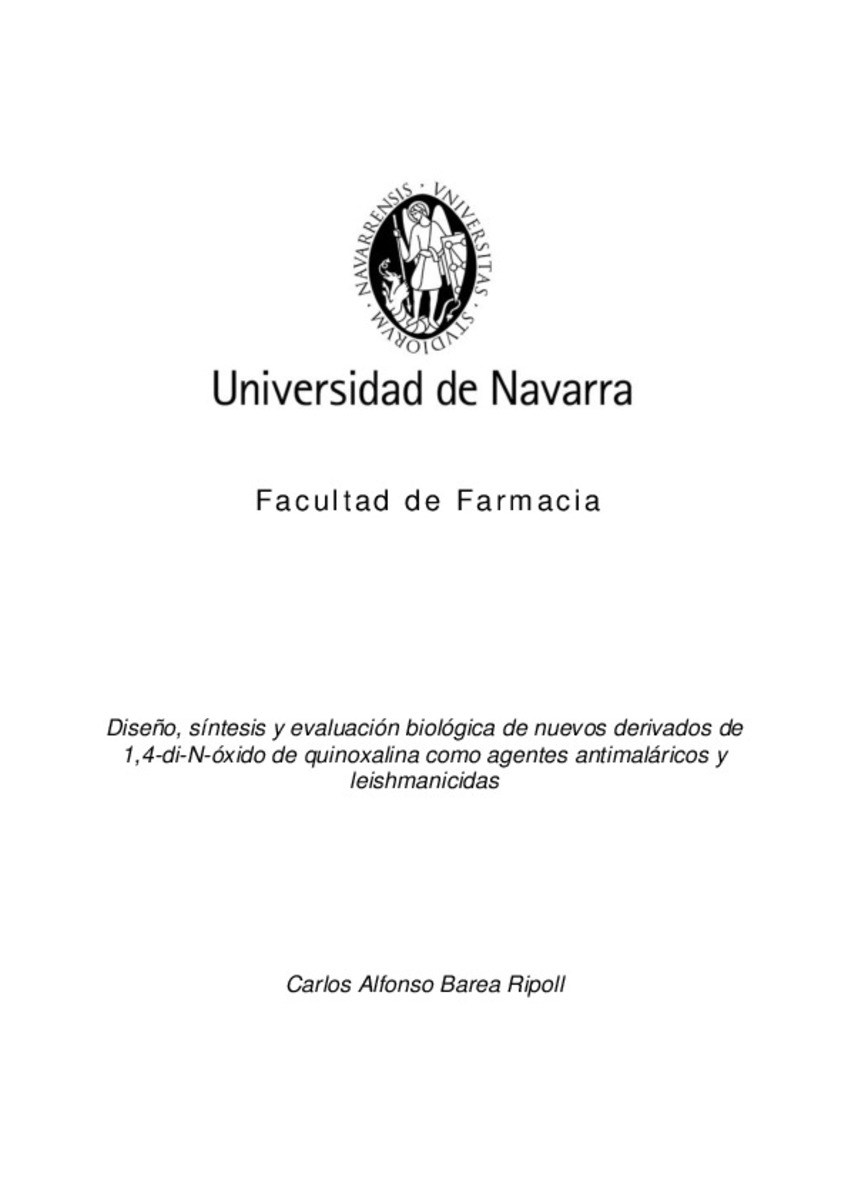Diseño, síntesis y evaluación biológica de nuevos derivados de 1,4-di-N-óxido de quinoxalina como agentes antimaláricos y leishmanicidas
Keywords:
Enfermedades olvidadas
Materias Investigacion::Farmacia::Farmacia y farmacología
Fármacos
Diseño
Defense Date:
15-Mar-2013
Publisher:
Servicio de Publicaciones de la Universidad de Navarra
Citation:
BAREA, C. “Diseño, síntesis y evaluación biológica de nuevos derivados de 1,4-di-N-óxido de quinoxalina como agentes antimaláricos y leishmanicidas”. Aldana, I. (dir.). Tesis doctoral. Universidad de Navarra, Pamplona, 2013
Statistics and impact
0 citas en

0 citas en

Items in Dadun are protected by copyright, with all rights reserved, unless otherwise indicated.







